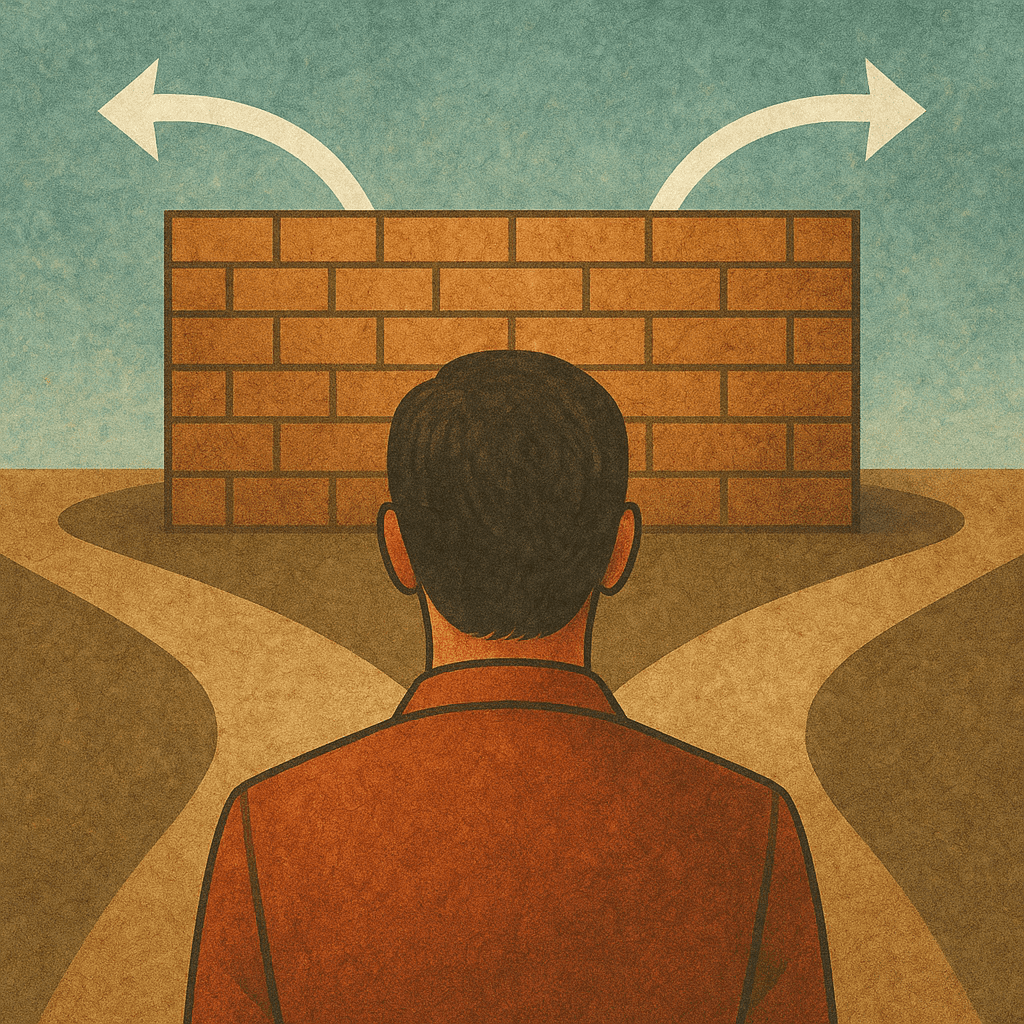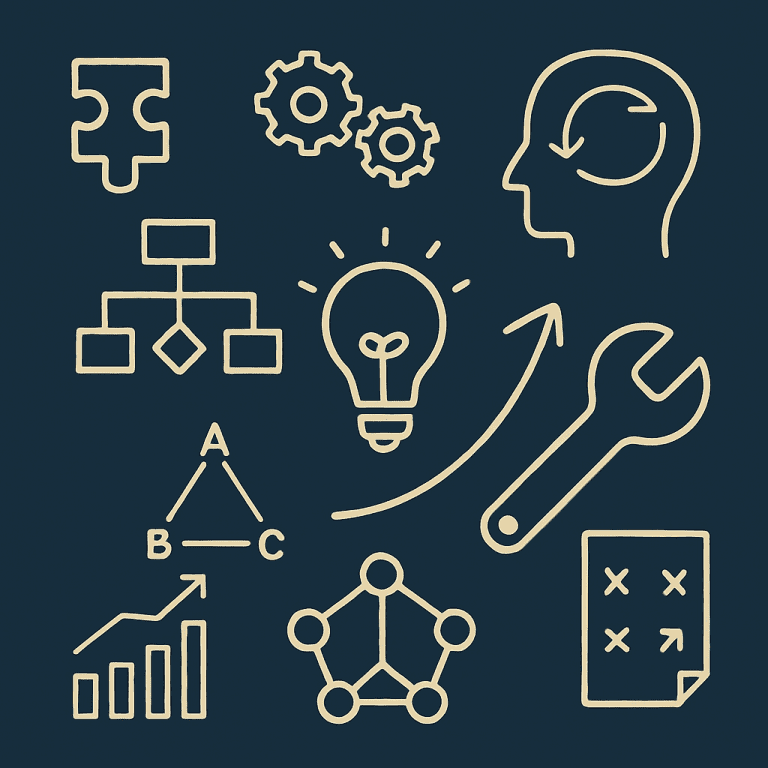Facing the Challenges of Systems Thinking with Clarity and Courage
Systems thinking is profoundly powerful.
It can fundamentally transform how we understand complex organizations, design resilient technology, craft effective public policy, and even courageously redesign our own lives for greater coherence.
But let’s be honest: it’s not always easy.
In fact, the very nature of systems thinking—its inherent breadth, its demand for deep interconnected thinking, and its insistence on seeing the whole—often creates its own set of unique, sometimes frustrating, challenges.
This post is about candidly naming those challenges.
Not to discourage you or diminish the journey, but to ground it in realism—and, more importantly, to equip you with the insight, humility, and resilience needed to meet these roadblocks head-on.
Because a truly system-aware mind doesn’t just see elegant loops and strategic leverage points. It also perceptively sees friction, blind spots, and internal resistance—including, crucially, its own.
🌀 1. Complexity Overwhelm
The Beauty — and the Burden — of Seeing Too Much
When you begin to see systems, everything connects. A simple problem unravels into a dense web of interdependencies, feedback loops, and shifting elements. What once looked manageable can suddenly feel like an impenetrable fog.
Systemic Trap: Trying to perfectly model and understand the entire system before taking action.
Mindset Shift: → From total control to mindful influence and iterative learning.
Try This:
- Clearly define the part of the system you can see.
- Identify one reinforcing loop or high-leverage point.
- Act deliberately there and observe the system’s response.
🔒 2. Resistance to Change
Systems Are Built to Sustain Themselves
Insight alone doesn’t move human systems. People cling to familiar norms. Your brilliant model may hit a wall of cultural inertia.
Systemic Trap: Believing that logic and evidence will naturally lead to adoption.
Mindset Shift: → From persuasion to co-evolution and shared ownership.
Try This:
- Map key actors and their incentives.
- Ask: What does the current system protect or reward?
- Frame change as a collaborative invitation, not an imposition.
🧱 3. Boundary Confusion
Where Does the System Truly End?
You can always zoom out further. But overly broad systems blur focus. Overly narrow ones miss vital factors.
Systemic Trap: Modeling boundaries as objective or fixed.
Mindset Shift: → From assumed frames to conscious boundary critique.
Try This:
- Use Boundary Critique to expose who is included/excluded.
- Ask: Who benefits from this framing? Who’s missing?
- Adjust boundaries consciously and iteratively.
📊 4. Data vs. Insight
More Information ≠ Better Understanding
Data is vital. But metrics alone don’t reveal patterns or feedback loops.
Systemic Trap: Equating measurement with meaning.
Mindset Shift: → From raw data to pattern recognition and narrative insight.
Try This:
- Ask of each metric: “What’s the story behind this trend?”
- Sketch causal loops that might explain the movement.
- Balance quantitative indicators with qualitative insight.
🪤 5. Paralysis by Analysis
The Cost of Waiting for Certainty
Complex systems can tempt us to endlessly model, hesitant to act without full knowledge. But life moves. Delay is itself a choice.
Systemic Trap: Over-analysis leading to inaction.
Mindset Shift: → From perfect plans to adaptive experiments.
Try This:
- Design a safe-to-fail pilot intervention.
- Implement, observe feedback, adapt accordingly.
- Learn through doing, not just thinking.
🔄 Mini-Cheat Sheet: Mindset Shifts
| Roadblock | Shift From | Shift To |
|---|---|---|
| Complexity Overwhelm | “I need to understand it all” | “I’ll act on what I can see and learn from feedback” |
| Resistance to Change | “I’ll convince them with logic” | “I’ll foster ownership and evolve the system together” |
| Boundary Confusion | “There is one right frame” | “Boundaries are choices; I choose and critique mine” |
| Data vs. Insight | “More metrics = more understanding” | “Patterns and relationships matter more than numbers” |
| Paralysis by Analysis | “I need a perfect plan first” | “I’ll start small and adapt through feedback” |
🧠 Final Thought
Systems thinking isn’t magic. It’s a rigorous, deeply human discipline. One that requires not just theory, but emotional resilience, adaptive humility, and active courage.
If you’ve ever felt overwhelmed or stuck—good.
That’s a sign you’re beginning to truly see.
But let that clarity guide movement, not paralysis. Act where you can. Learn as you go. Question your frames. Honor your intuition. Stay in the dance.
Because ultimately, systems thinking is not about control.
It’s about conscious participation.
- The Whisper of the Whole: A Systems Thinking Guide for Consultants
- What is a System, Really?
- The Living Dance of Systems
- Resilience and the Wisdom of Adaptive Systems
- Roots of Insight
- The Systems Thinker’s Compass
- Drawing Complexity
- Peering Below the Surface
- Master Methodologies in Systems Thinking
- Enhancing Familiar Tools with Systems Thinking
- Transforming Business Through Systems Thinking
- Systems Thinking in Public Policy & Governance
- Sustainable Systems
- Systems Thinking for Engineering & Technology
- The Inner System: You
- The Roadblocks
- The Future of Systems Thinking
- Systems Thinking FAQ: Myths, Misunderstandings & Core Insights







